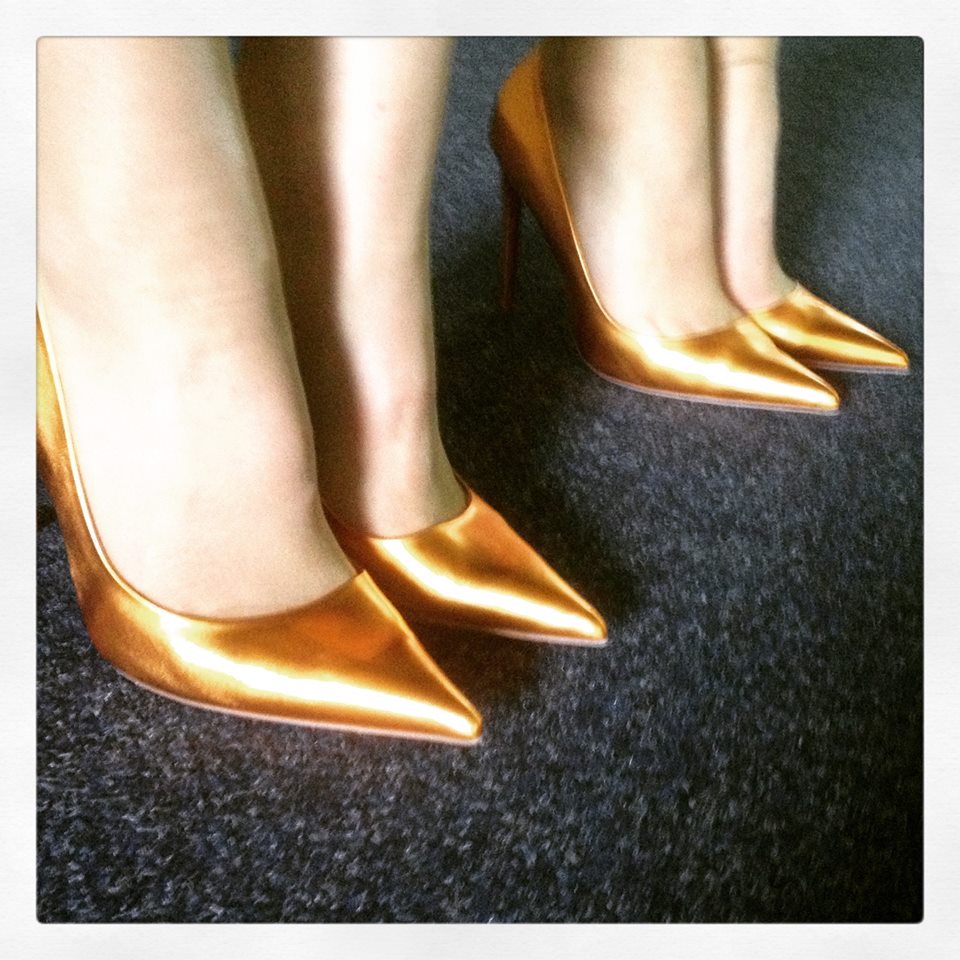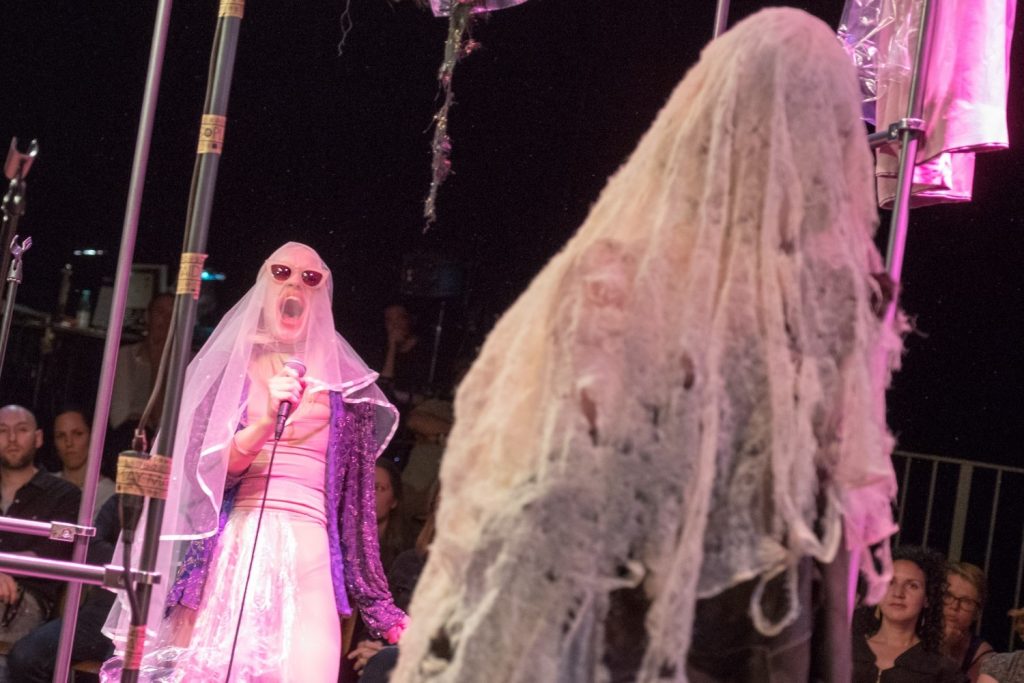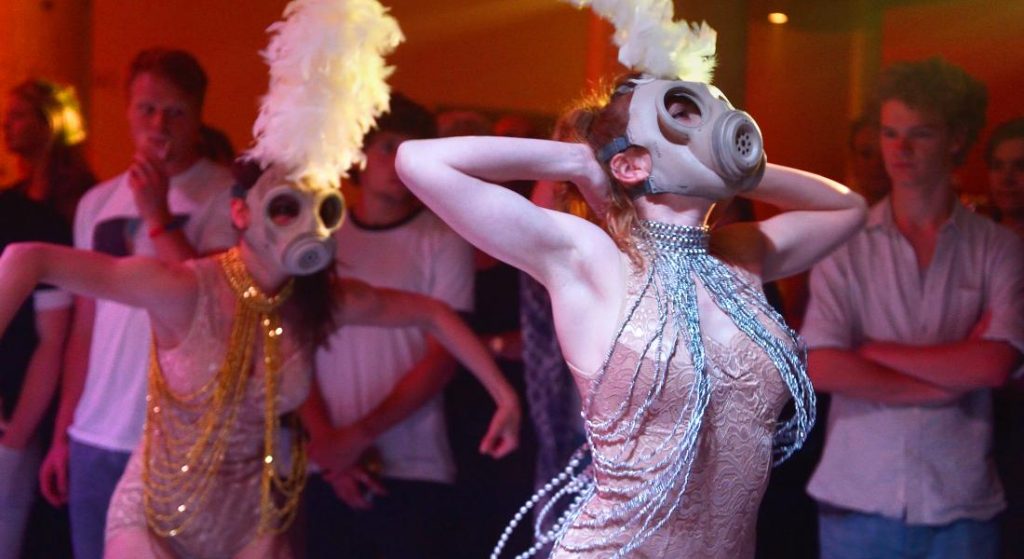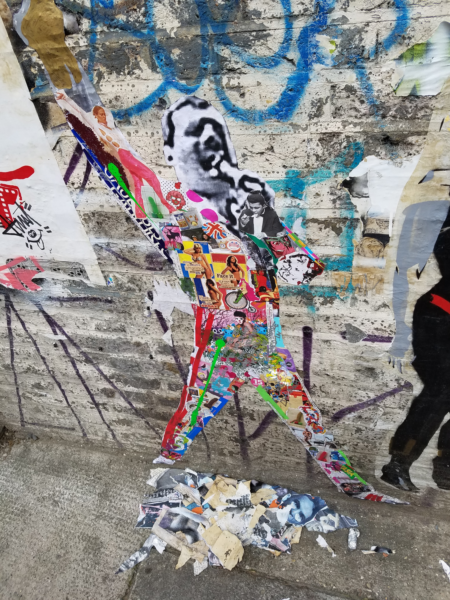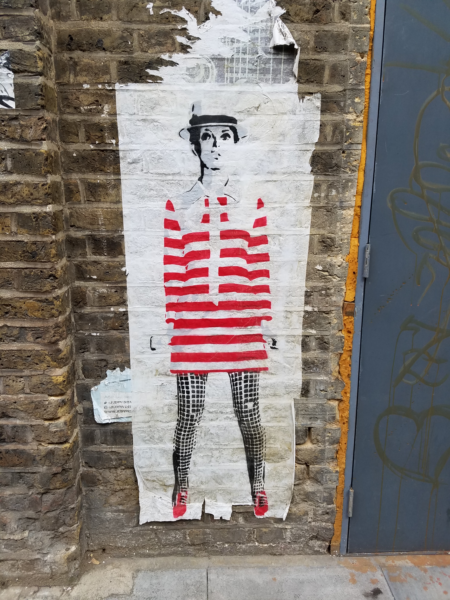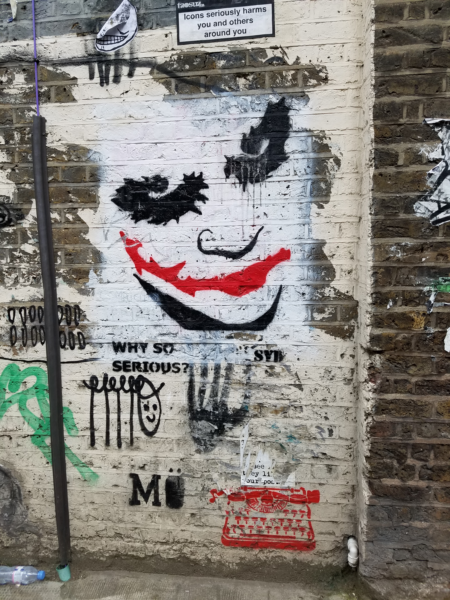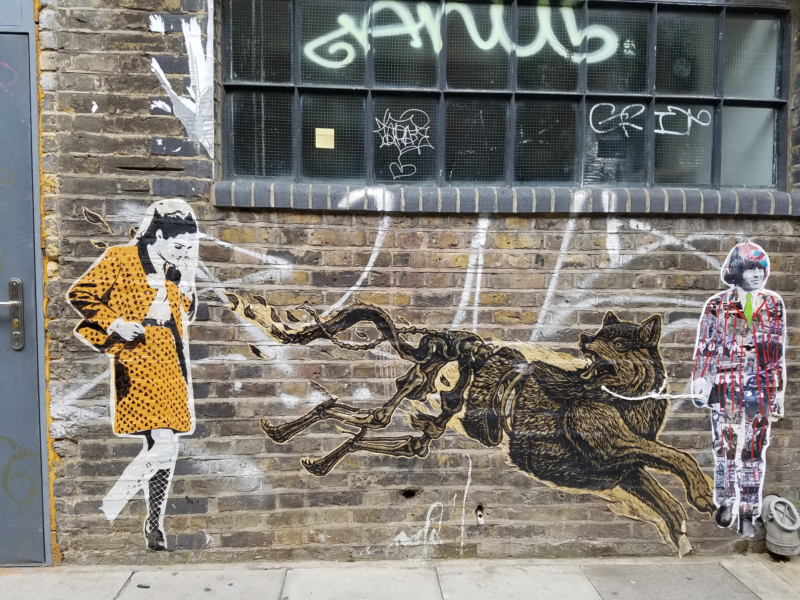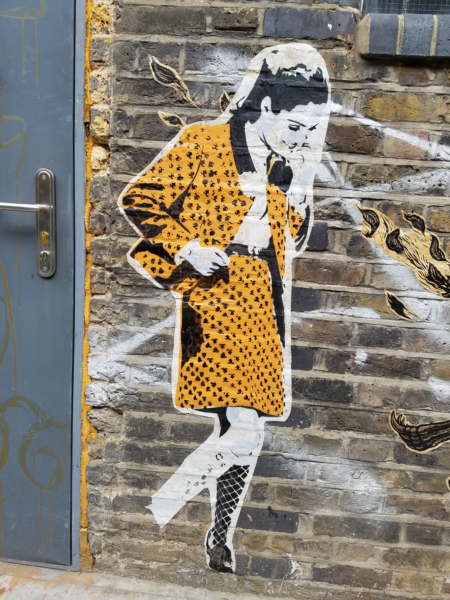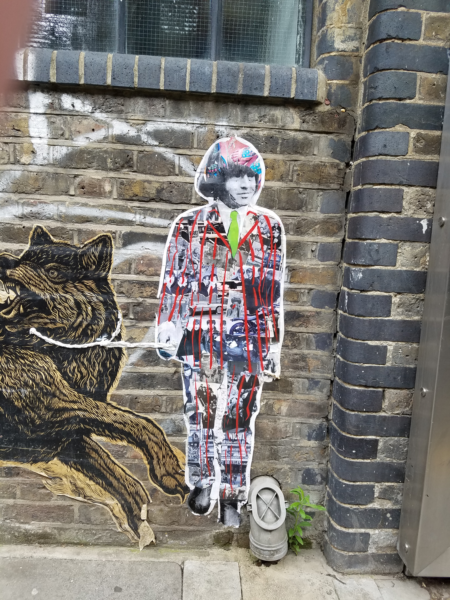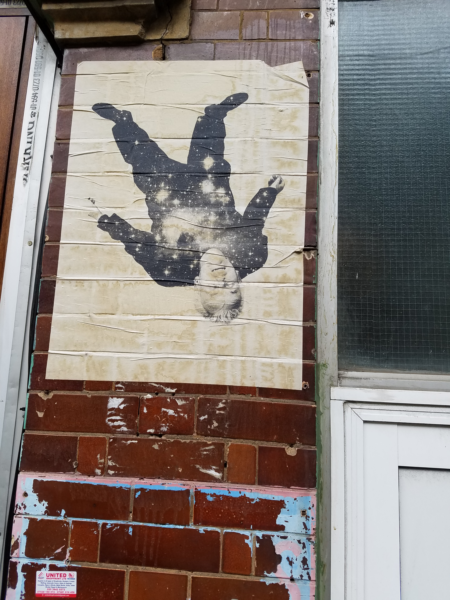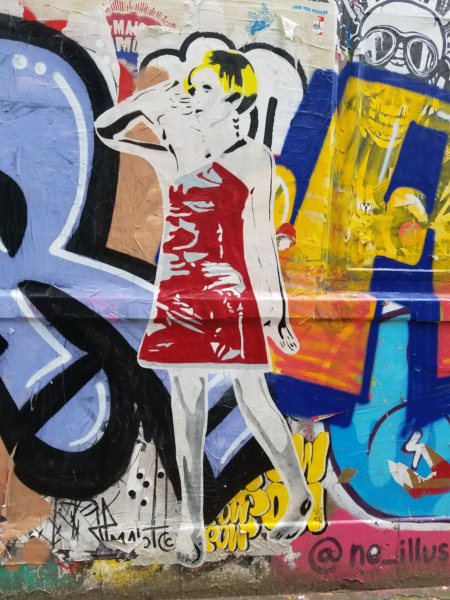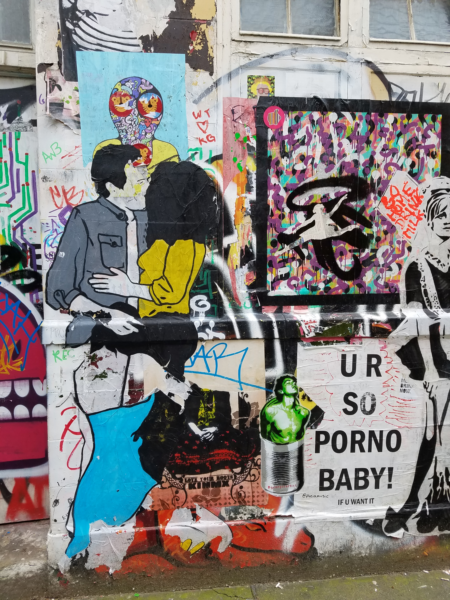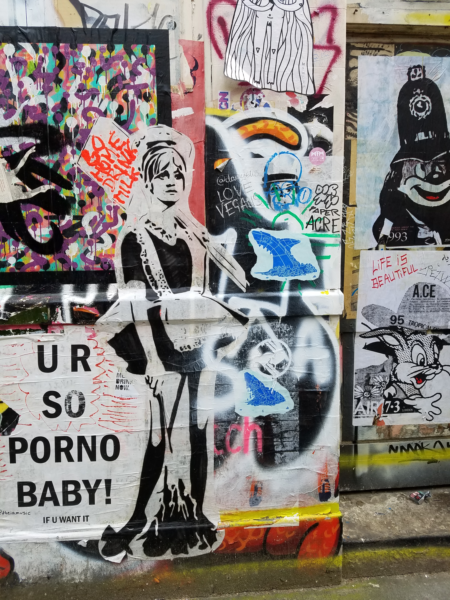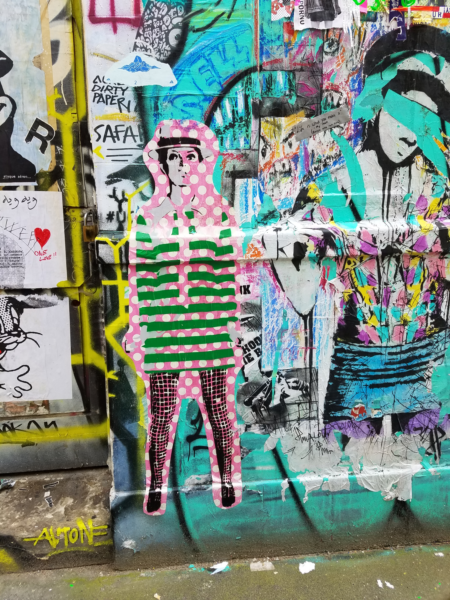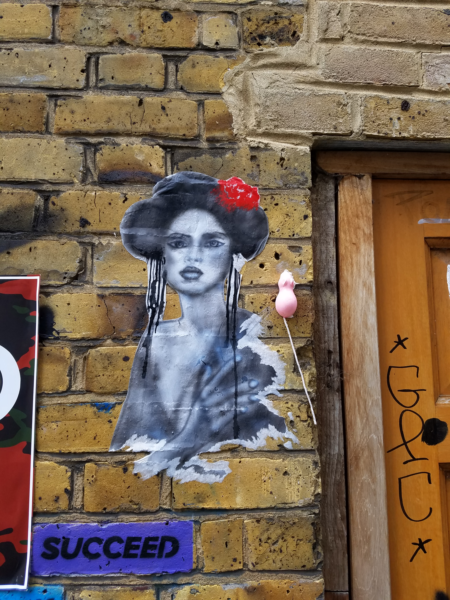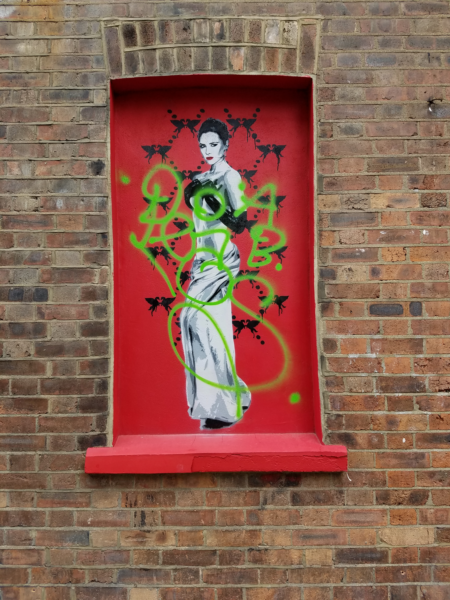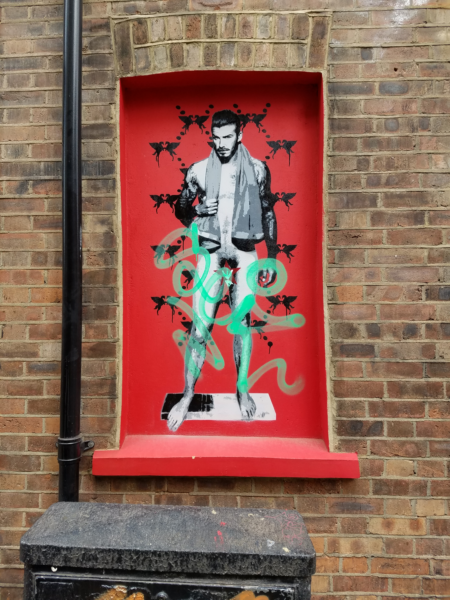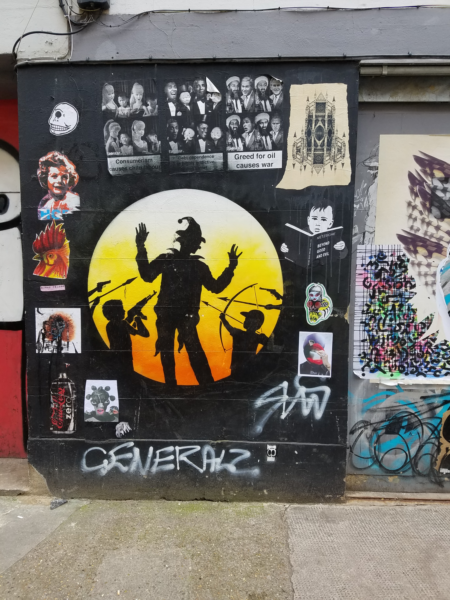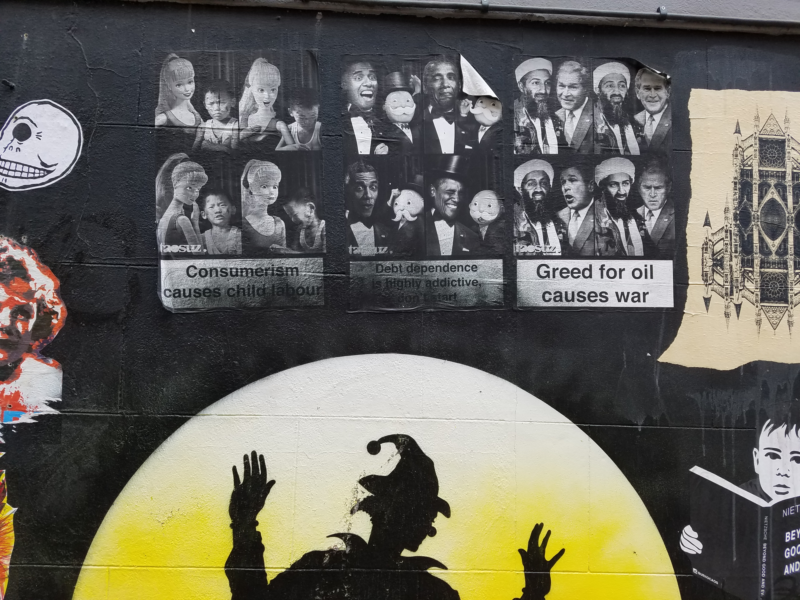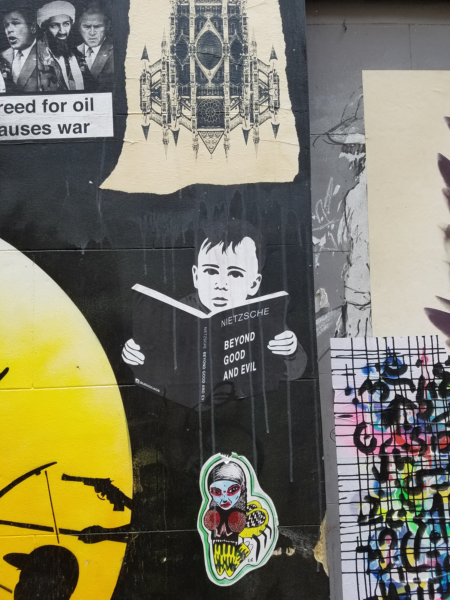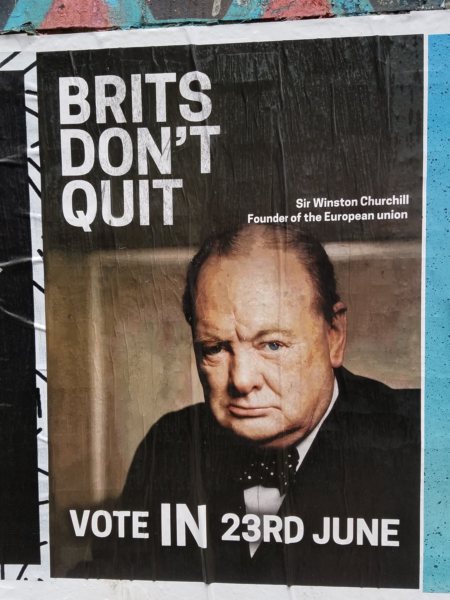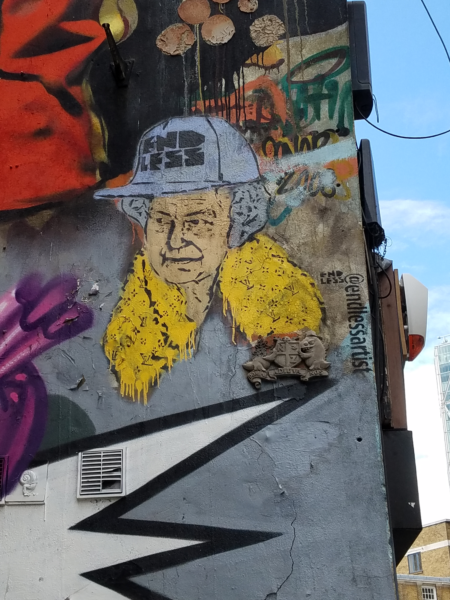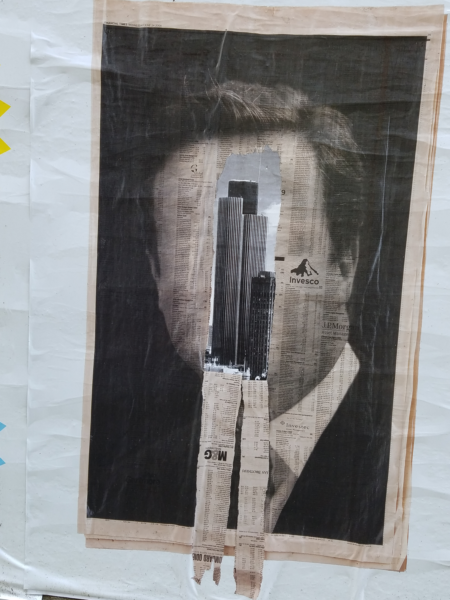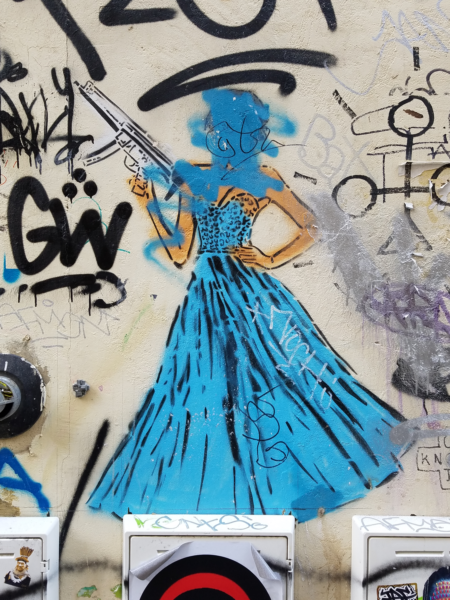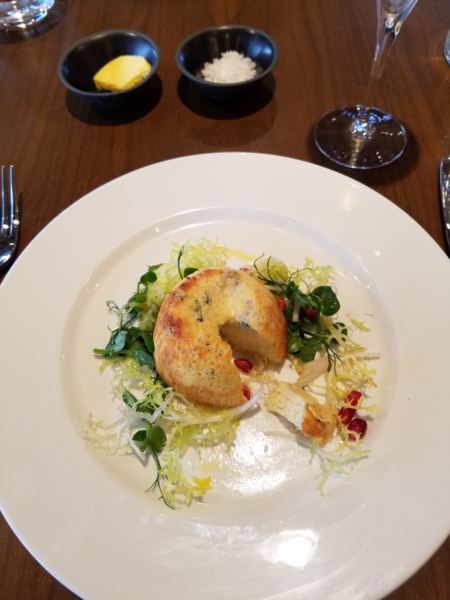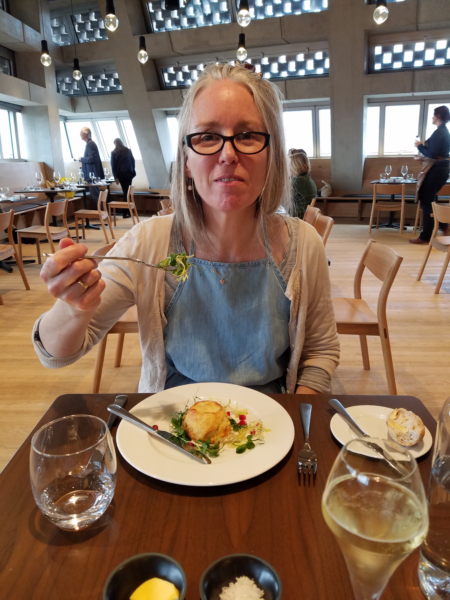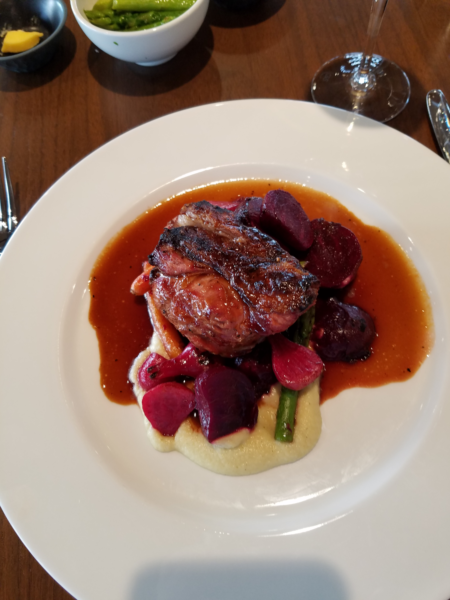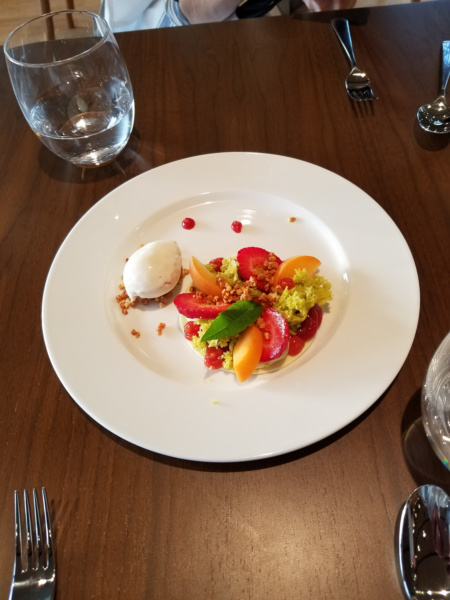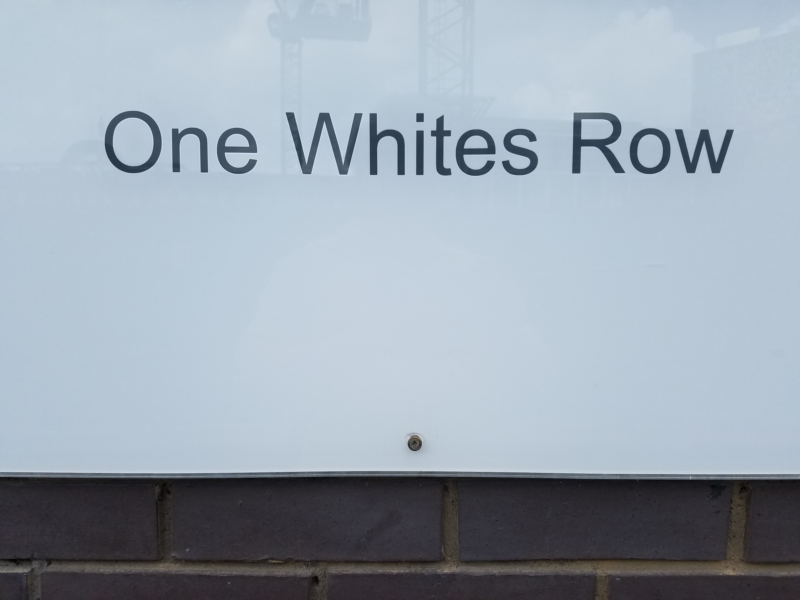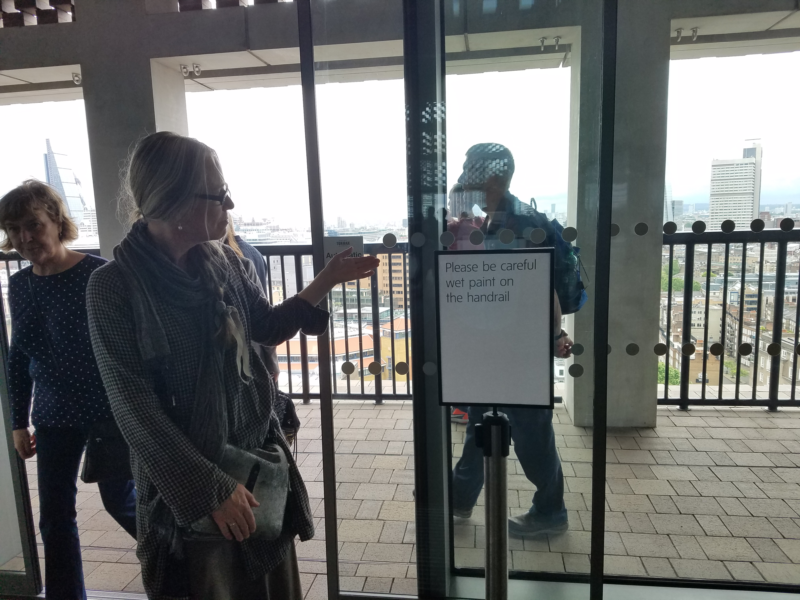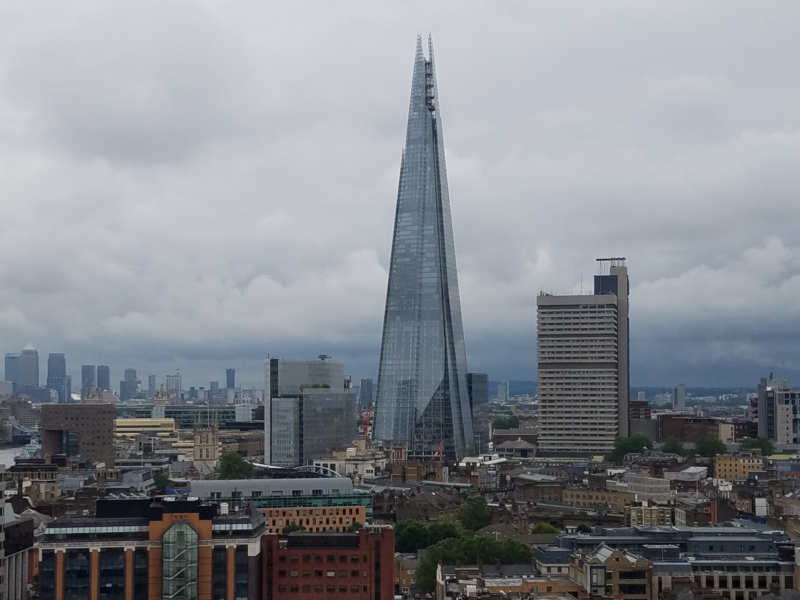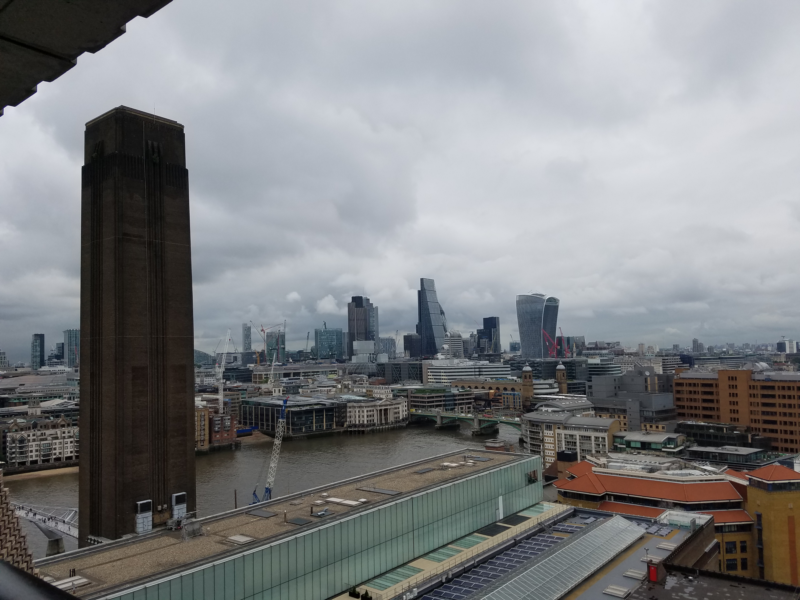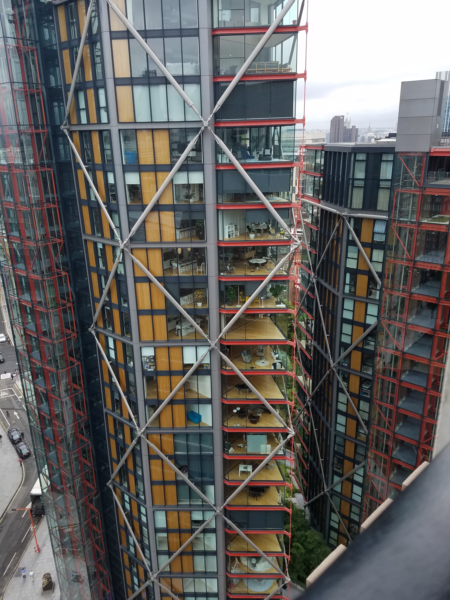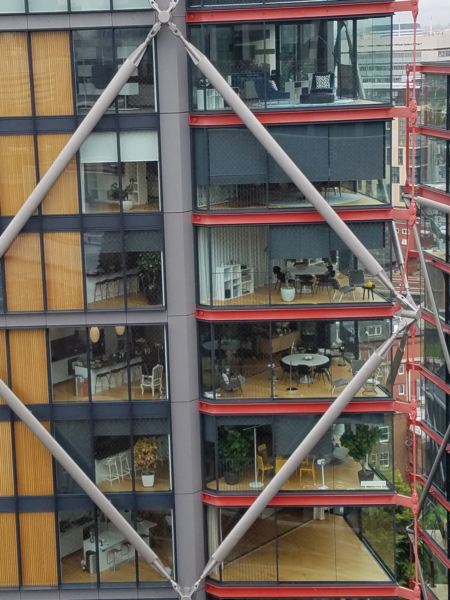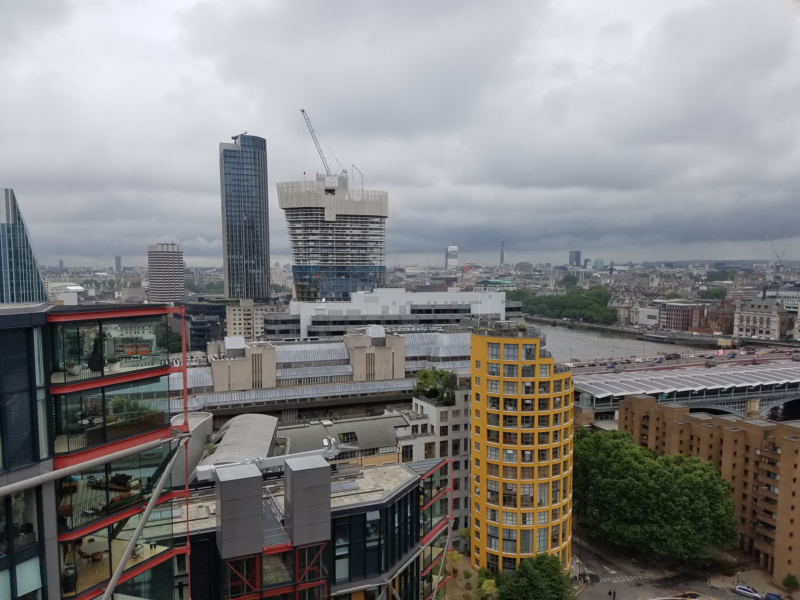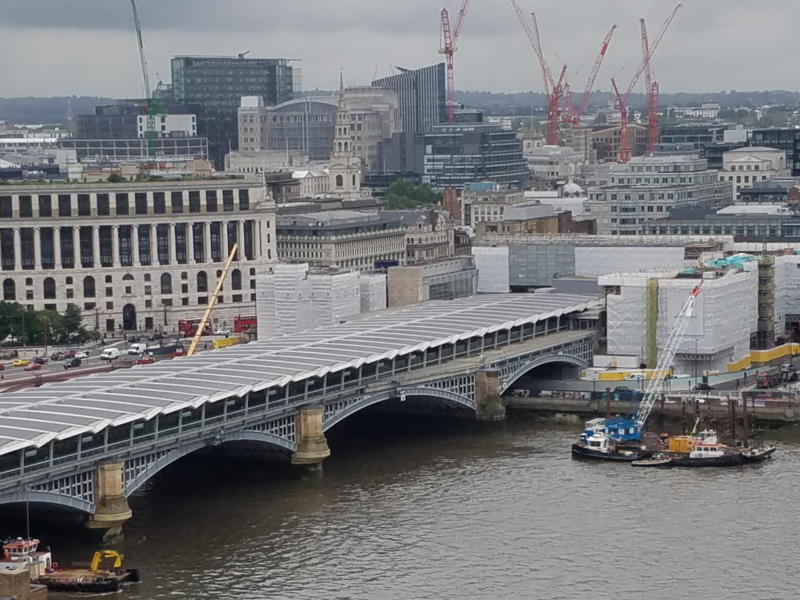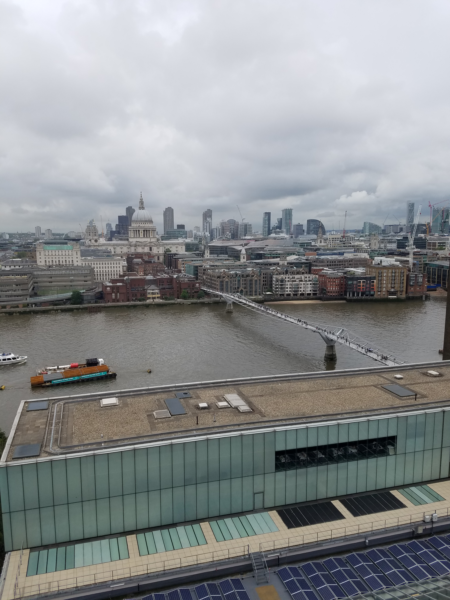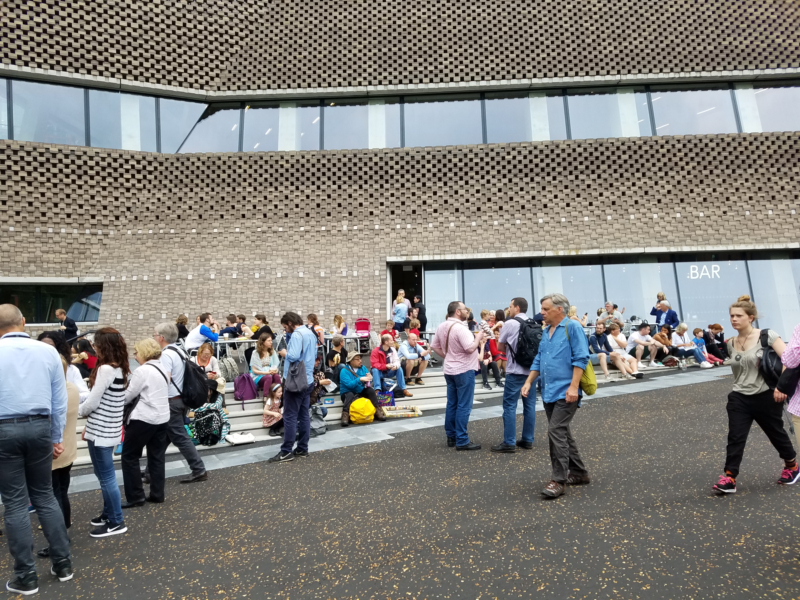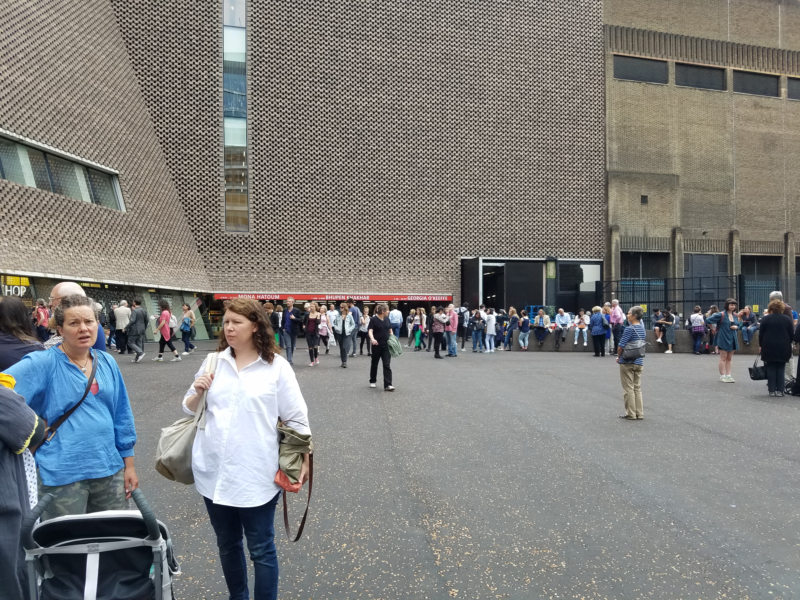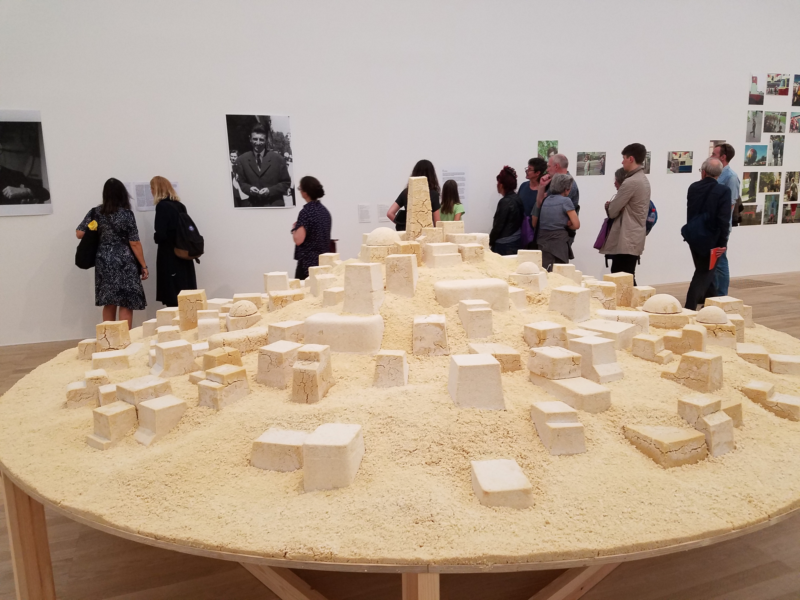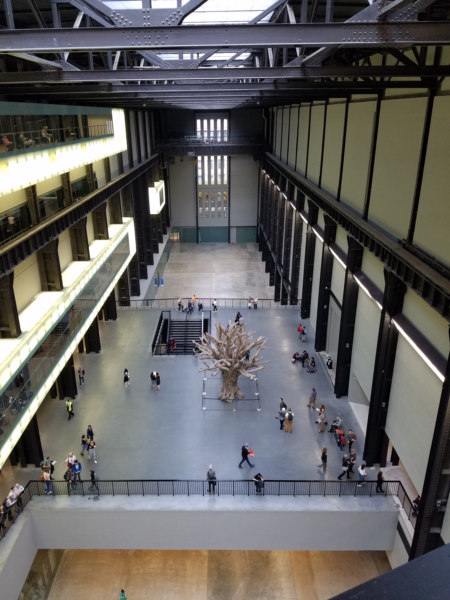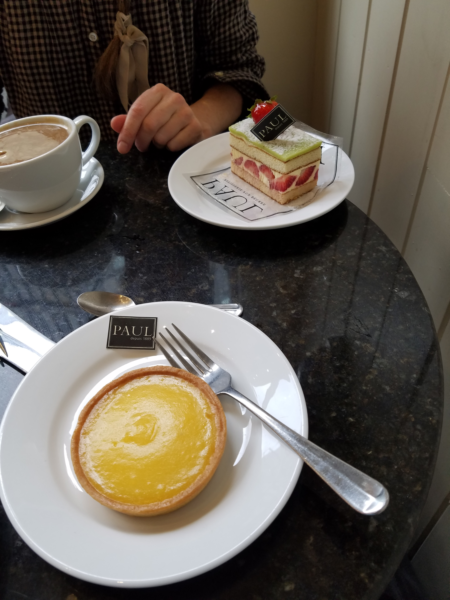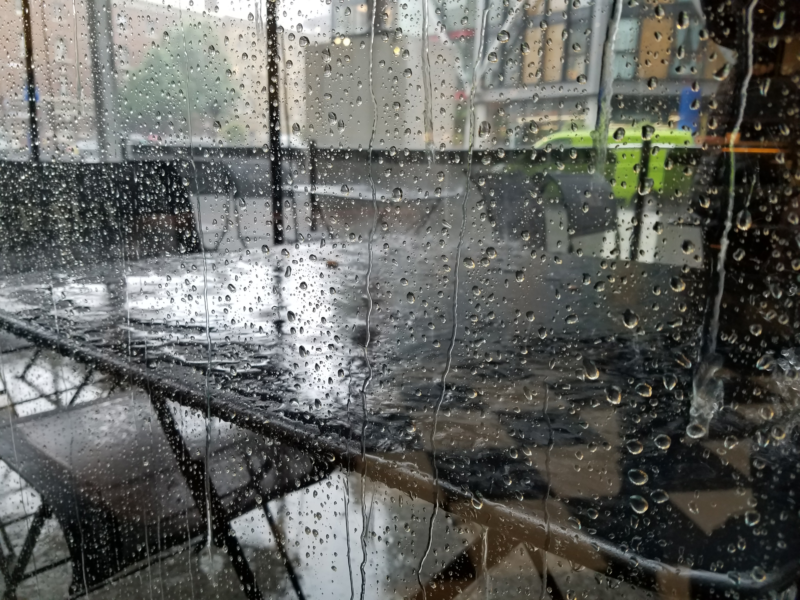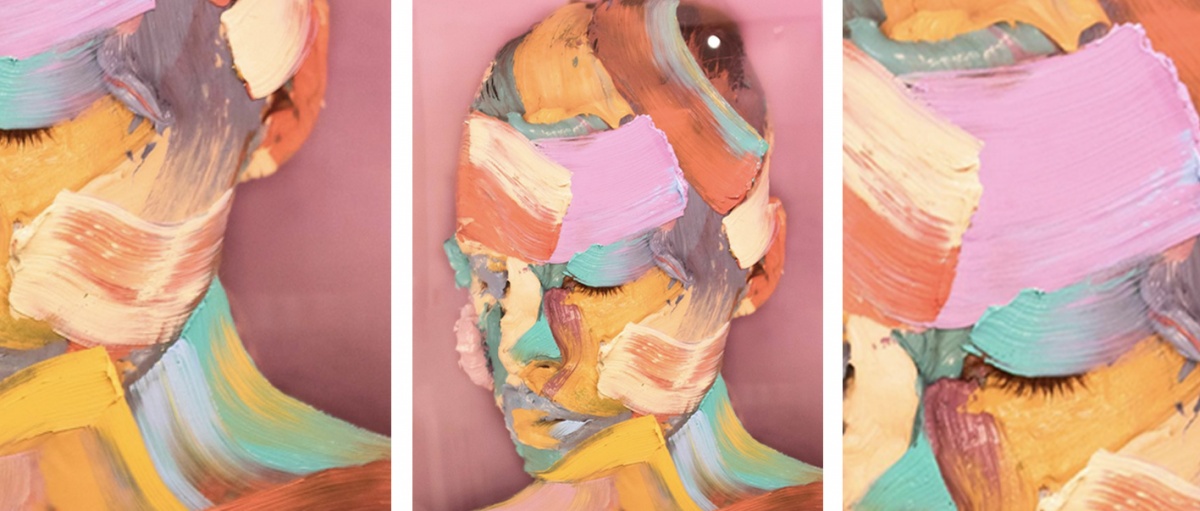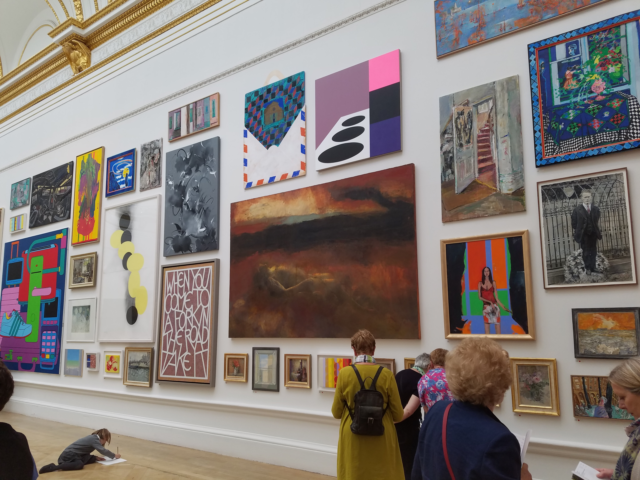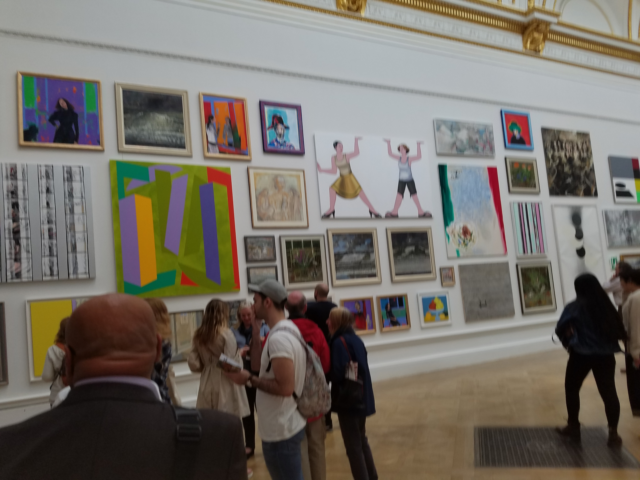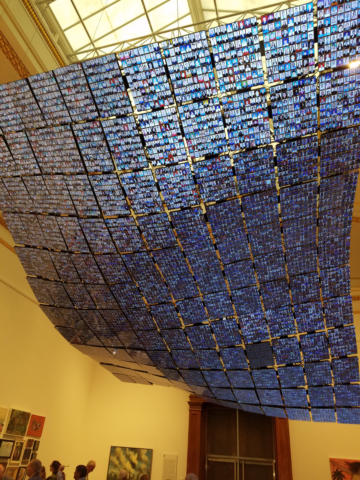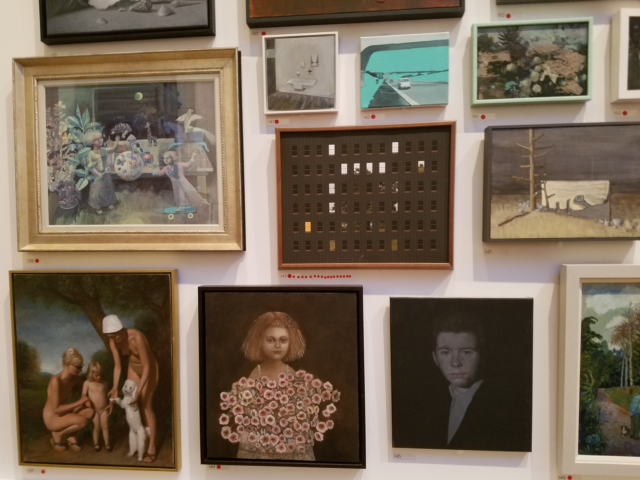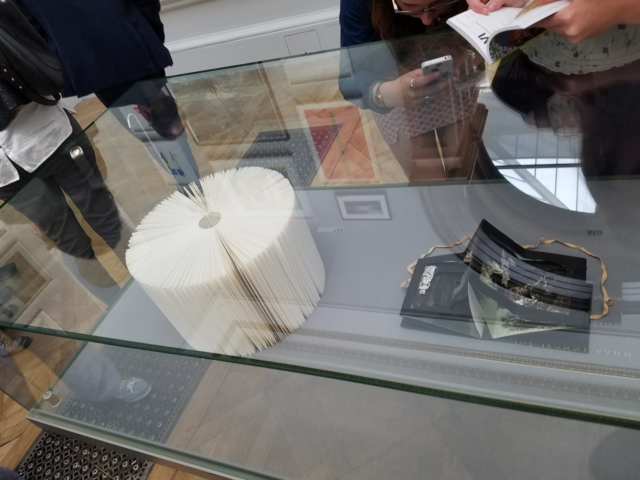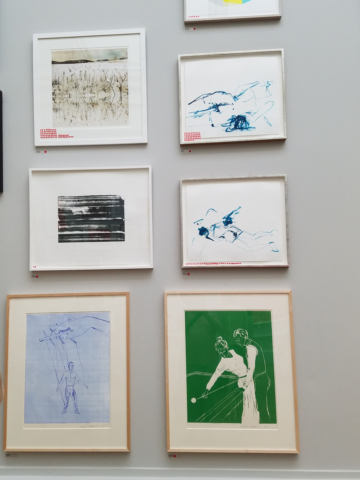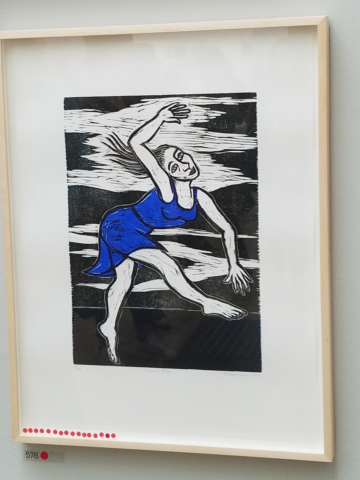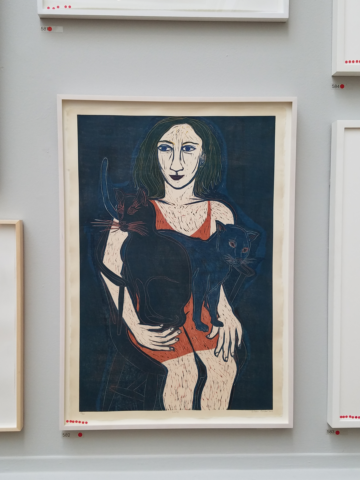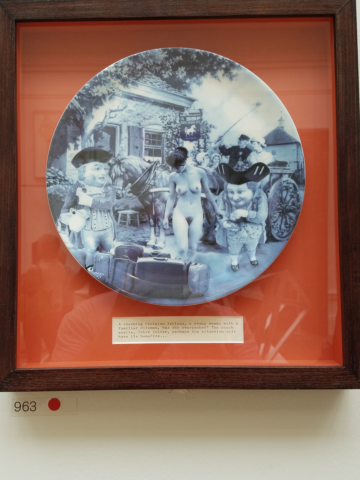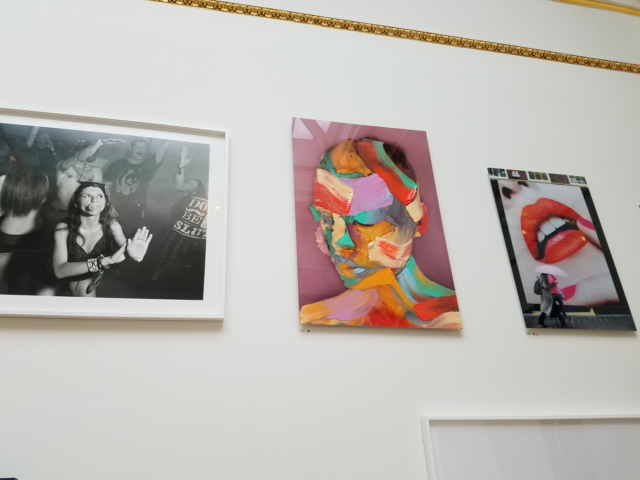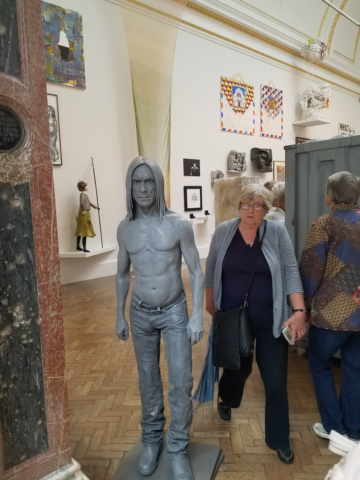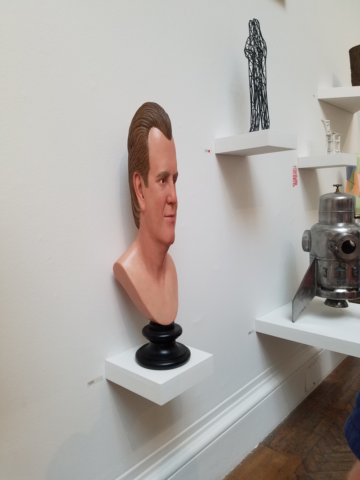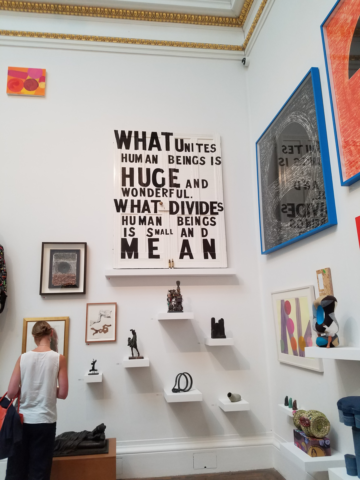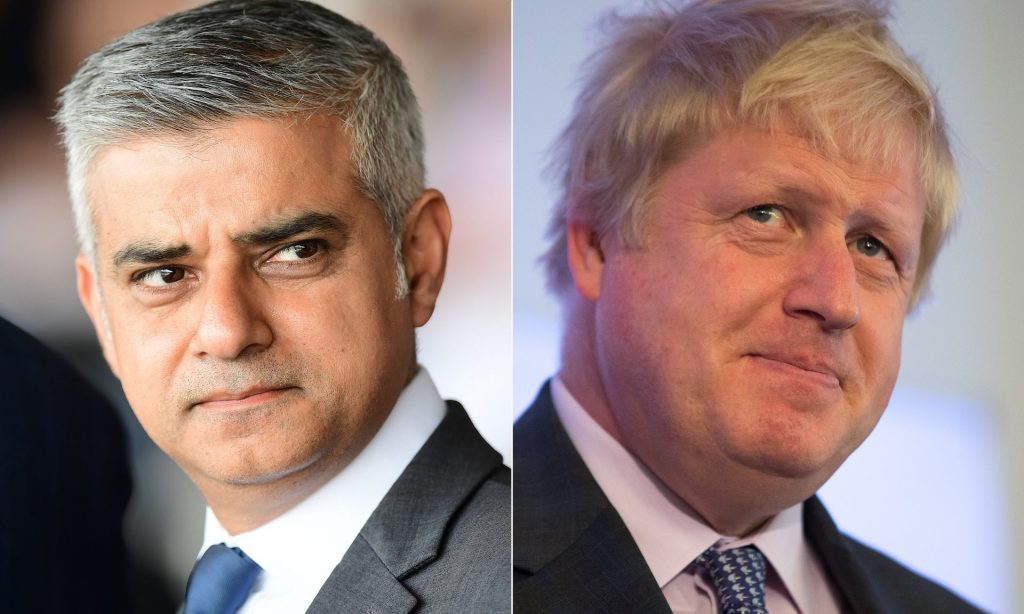Busy day at the galleries today, as well as plenty of walking and some shopping and lots of crowds.
First stop today was Hermitage Amsterdam, for the twin exhibitions, Portrait Gallery Of The Golden Age, and Alexander, Napoleon & Josephine. Since the largest crowds were heading towards the latter, I started with the former. Glad I did. I allowed myself almost two hours to stroll, enjoy and learn in these expansive galleries.
This former alms house for “old” women (those over 50) and later for similarly “old” men, built in the 1850s, have been converted into a truly astonishing gallery complex. The ceilings are high, the rooms are airy, the installations complex and extraordinary. An astute eye reveals just how flexible the space is, as large “doors,” wide enough to block an entire hallway, can be swung completely out of view. These doors, acting more like moveable walls, can reshape the gallery the way many museums use velvet ropes or temporary panels.
In this case the exhibit starts in a series of small chambers which give us the back story of Amsterdam society in the 1600s, the civic councils, guilds, guards, etc. and how members of the upper classes moved between these and through them administered the affairs of the city. These were Calvinists, almost exclusively, although they did tolerate other Protestants, and (to a degree) Jews. The city was already an international trading hub — several of the street scenes include men in fez or turban — and the burghers wanted to ensure that the populous was more or less happy and content. Discontent being bad for business.
The entry salon uses an ingenious system of projections onto painted walls to single out four civic leaders who we will follow throughout the rest of the exhibit. This technique allows the incredibly well written text lead us through about 125 years of history, from the founding of the Dutch Republic through to the end of the 17th century, and, ultimately, into the present day.
The real focus here is on the appetite of the ruling merchant class for portraits of themselves serving the civic good, in groups, thus establishing their rightful place in the social order. Almost always, especially in the earlier, more rigidly posed portraits, the men (and they are all male in the early years) are shown in two ranks. These early portraits are of civic guard units — the long bowmen, the cross-bowmen, the pikesmen, etc. — are analogous to more modern military unit portraits. As time progresses, and civic attention turns to more than just the guard and the protections they offer, to charitable works — alms houses, prisons, hospitals, etc. — we see boards of governors and governesses (yes the ladies do start to appear).
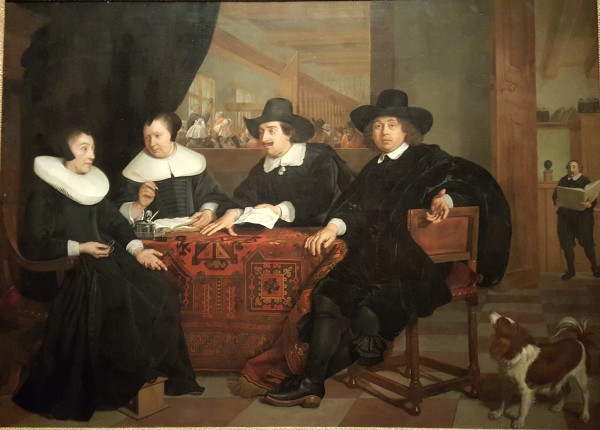
After this introduction, we enter a grand gallery which is hung “salon” style, but here that means only two ranks of paintings, even though the room is over two storeys tall. Here’s an example:
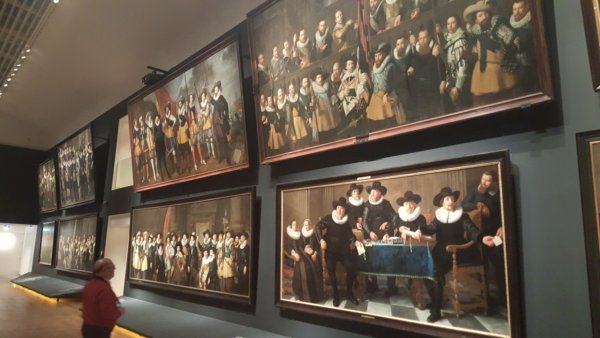
See, the paintings are just so huge that they couldn’t fit any more! Each of these is about 20 feet or more long, and, as you can see, about 7 feet tall, or more. Several of the frames have metal joining plates in the middle of the horizontal segments, as can be seen on both of the paintings closest to us. By the way, note the two smaller figures to the left of the closest picture. Those are governesses on this board. The text explains that the painter was likely not told ahead of time that he was to include them, and so ran out of space.
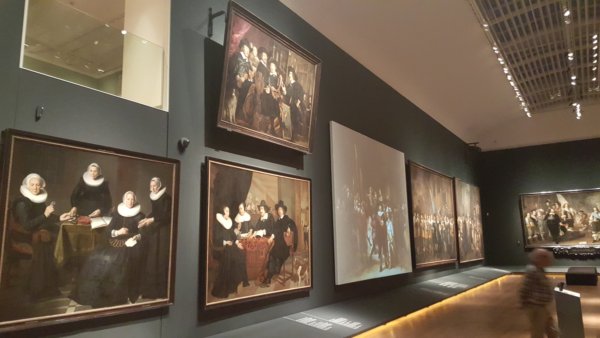
The large video screen, seen above, is used for a ten minute long explainer, which plays with the other images in the room and quite effectively draws us into the subject.
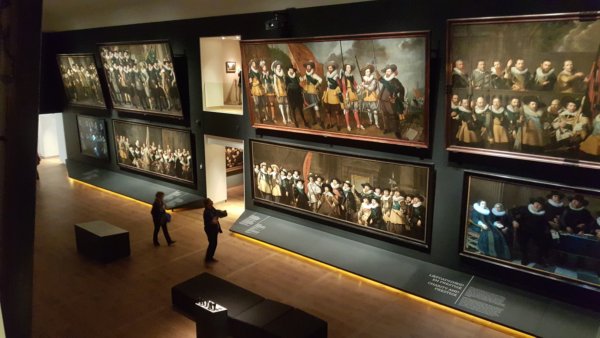
Here the large, central, gallery is seen from above in the second floor chambers. There are several openings like this, into the large gallery, which allows for clever interaction between the exhibition content in the two locales. For example, in one upper gallery, text by the side of an opening tells the viewer to look down into the lower gallery and identify both a woman (to the left in the right-most lower picture, above) and to her daughter in an adjacent (not seen here) portrait.
I thoroughly enjoyed this exhibition, and the creativity of the presentation. Four stars!
Now, out into the city again, and to find something to eat and maybe some shopping. Here’s a few snaps, mostly at a flea market, along the way:
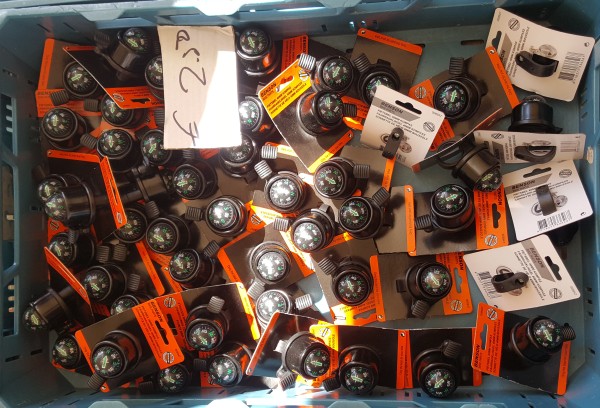
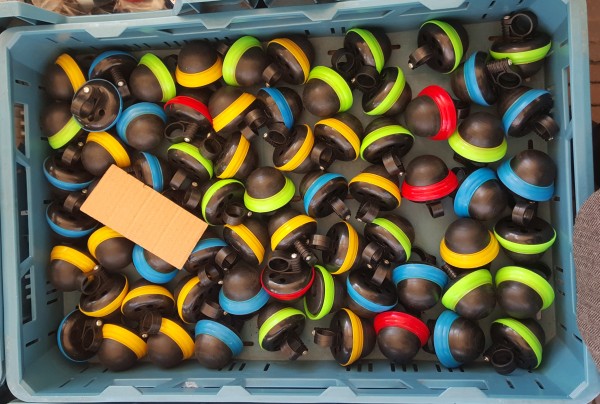
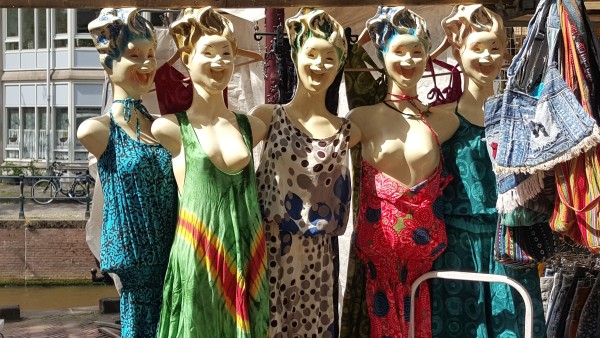
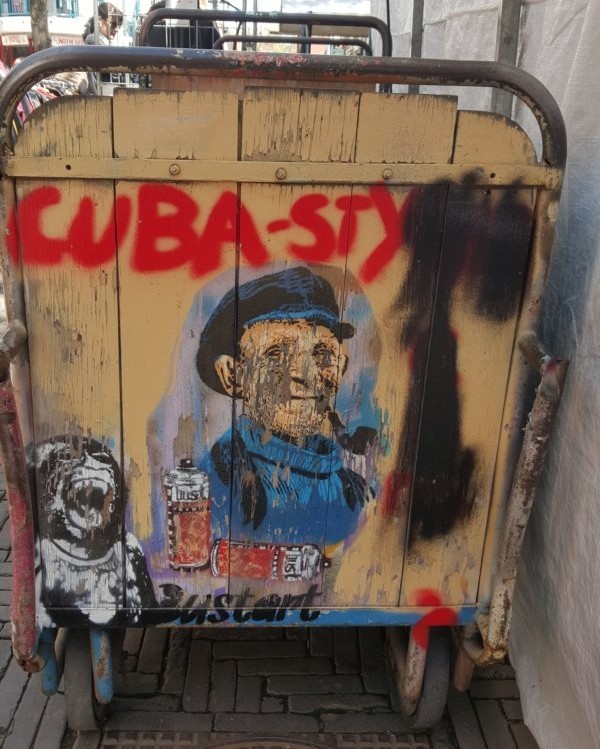
I was about to just head over to Rembrandthuis, but found myself standing right outside of something I’d espied from the tram a few times, DWDD Popup Museum.

I honestly had no idea what it was, but had been intrigued by the idea of a pop-up museum (something I’d like to try some time) and figured, “what the hell?” Again, it helped that I had a Museumkaart, as DWDD accepted that for free admission, as did all the museums I entered today.
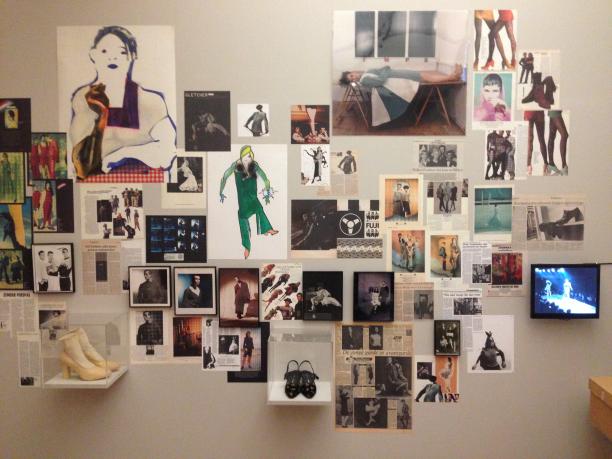
So, what is DWDD? It’s “De Wereld Draait Door.” I think it’s something like The World At Your Door, a series of galleries each curated by different person, each from the collection of another major cultural institution in The Netherlands. I say, “I think…” because there was absolutely no English translation available for any of the exhibit text, catalogue, pamphlets, etc. So, I was flying blind.

Okay, just checked Wikipedia, which tells me that DWDD, “de wereld draait door,” actually means either “The World keeps turning” or “The World is going crazy,” and is the name of a Dutch television program. I’ve had a devil of a time learning more about it, but did find this list of curators:
Halina Reijn (Museum de Fundatie), Joost Zwagerman (Gemeentemuseum Den Haag), Marc-Marie Huijbregts (Van Abbemuseum), Pieter van Vollenhoven (Rijksmuseum), Jasper Krabbé (Stedelijk Museum Amsterdam), Nico Dijkshoorn (Drents Museum), Herman Pleij (Museum Catharijneconvent), Jan Mulder (Groninger Museum), Cécile Narinx (Centraal Museum) en Fidan Ekiz (Nederlands Fotomuseum).

And this capsule explanation of the project (in a poor Google translation from the Dutch):
The World Keeps Turning tenth anniversary. The moment for a particular idea. Send ten patrons of the much watched television program to ten museums in the Netherlands. Give them free access to repositories and let them choose their own favorite work of art. The result is a unforgettable pop-up exhibition that will take place January 30, 2015 in the Allard Pierson Museum in Amsterdam. A look not only in the treasuries of the ten museums but also in the spirit of the guest curators.
And also this magazine article, which is unfortunately in Dutch, as well:
https://www.scribd.com/doc/254075006/DWDD-PopUp
Anyway, it was a cool, if somewhat mystifying exhibit experience.

After all that, is was back in a big loop around the neighborhood and up to Museum Het Rembrandthuis; The Museum in Rembrandt’s House. This is the actual house, quite large and grand, in which Rembrandt lived and worked for 20 years, in the mid 17th century. There’s a lot of artwork up, some of which are by Rembrandt, and some of which were in his rather large collection (he sold other’s art as well).
Here’s a few snaps of his Cabinet of Objects de’Art, which was a large salon on the first floor in which he stored all manner of artwork, books, sketches, models, etc.:
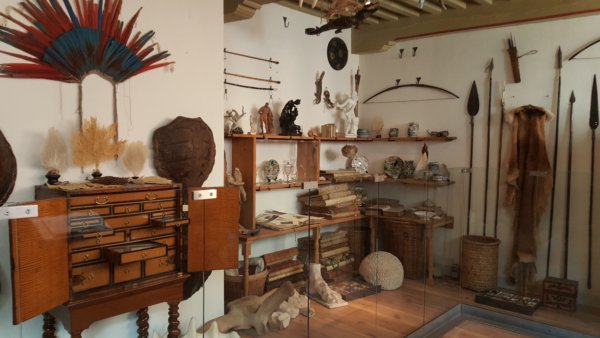
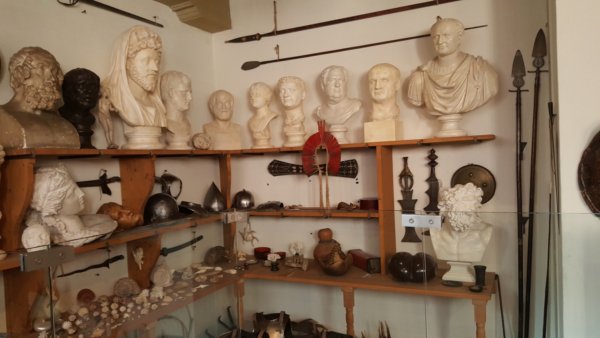
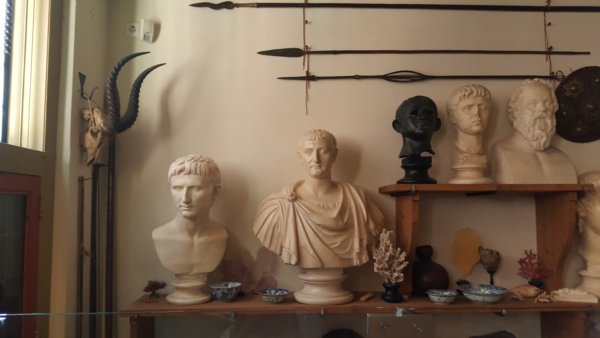
Also intact is his studio, shown here with his large easel, painting supplies and various tools:
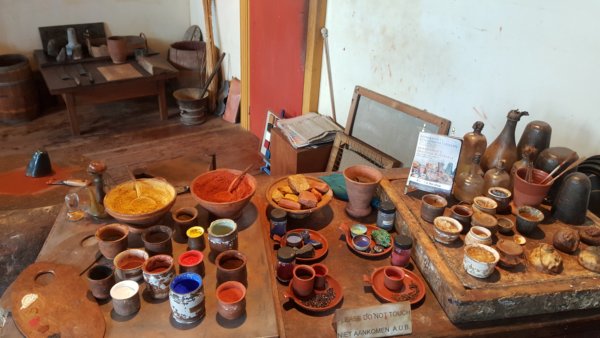
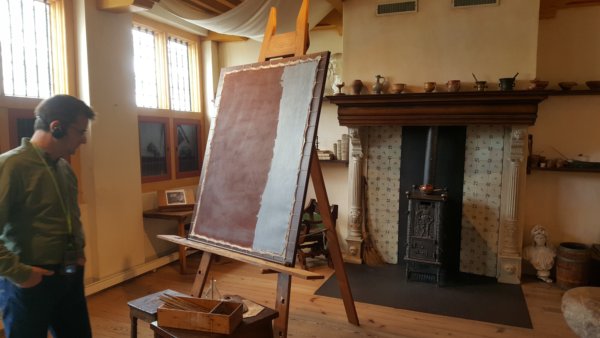
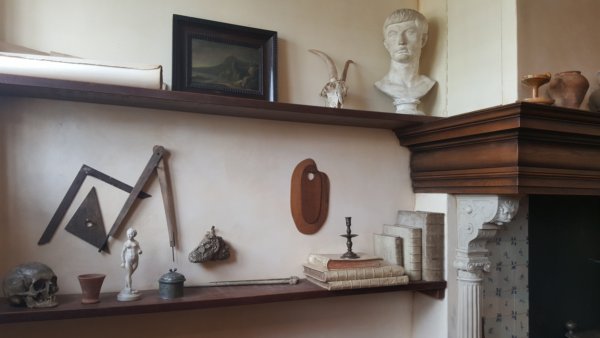
Finally, the upper level housed Rembrandt’s atelier, the classroom and workshop where he trained his apprentices and they worked for him. This was also preserved, more or less, and one can take lessons here even today, as several people were:
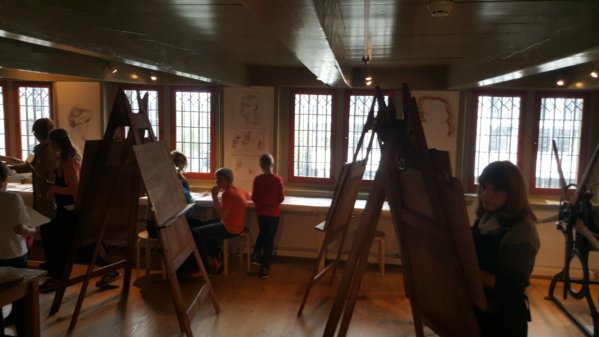
From here we’re led into a modern annex, which houses both permanent and temporary exhibits. The temporary exhibit up now is Rembrandt’s Late Pupils, a hat-tip to the larger Late Rembrandt show up at the Rijksmuseum right now. This was interesting, but a little cramped. Did enjoy it, however.
Oh, and by the way, no I am not going into “coffee shops” and getting blasted; not that there’s anything wrong with that. You know, it’s really something; everywhere you go, in some districts, you smell weed. It’s kind of odd, that smell so distinctive, and so unexpected in such public settings. But, it’s really only in some places that it’s so pervasive. Other places one may smell it, but it does stand out.
Okay, that’s all for today. I had a blast with this all, and again, get a Museumkaart, it’s the way to go!
